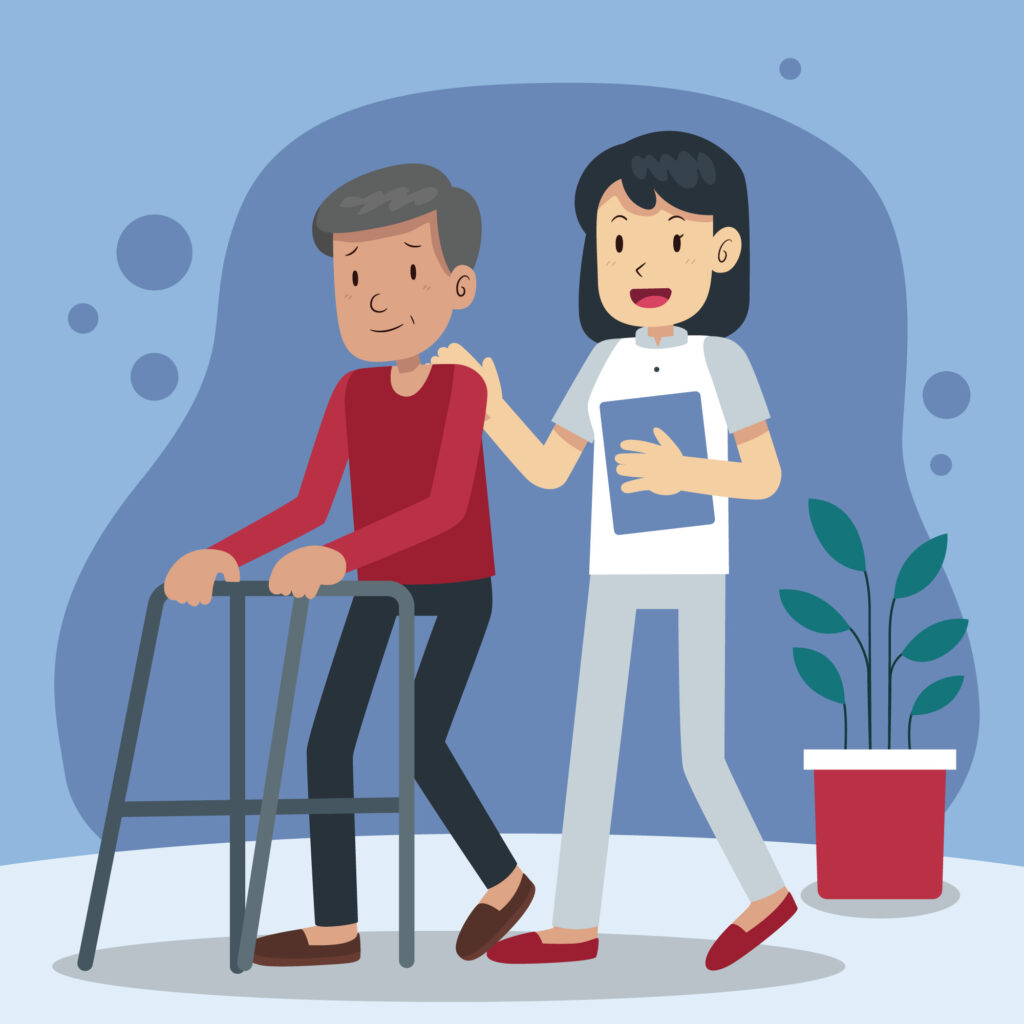
Introduction
Do you know what is “Rheumatoid Arthritis Self Care”? Living with rheumatoid joint inflammation (RA) can be a day to day challenge, however with the right taking care of oneself techniques, you can deal with your side effects and keep a decent personal satisfaction. Rheumatoid joint inflammation taking care of oneself is tied in with assuming command over your wellbeing, settling on informed decisions, and tracking down ways of limiting agony and uneasiness. In this complete aide, we’ll investigate the vital parts of rheumatoid joint pain taking care of oneself, enabling you to carry on with your best life regardless of this persistent condition.
Table of Contents
Grasping Rheumatoid Joint inflammation
Rheumatoid joint inflammation is something beyond an intermittent throb and agony. An immune system problem basically influences the joints, causing irritation and agony. Not at all like osteoarthritis, which is commonly connected with mileage, RA’s underlying driver is your own resistant framework erroneously going after the synovium, the coating of your joint containers. This persistent irritation can prompt joint harm, agony, and even inability whenever left untreated.The Impact of Rheumatoid Arthritis
RA doesn’t just affect your joints; it can have a profound impact on your entire life. Here are some common challenges that people with RA face:
- Pain and Discomfort: The most obvious symptom of RA is joint pain. It can range from mild to severe, making even the simplest tasks, like getting out of bed or buttoning a shirt, excruciatingly painful.
- Fatigue: RA often comes with debilitating fatigue. It’s not the kind of tiredness that a good night’s sleep can fix; it’s a constant, overwhelming exhaustion.
- Stiffness: Joint stiffness is a hallmark of RA. In the morning, your joints may feel especially stiff and take a while to loosen up.
- Limited Mobility: As the disease progresses, RA can restrict your range of motion. This can make it difficult to perform daily activities and can lead to muscle atrophy.
- Emotional Impact: Living with a chronic condition can take a toll on your emotional well-being. It’s common for people with RA to experience anxiety and depression, and this can further exacerbate physical symptoms.

Rheumatoid Arthritis Self-Care
Fortunately while there is no remedy for RA, there are various taking care of oneself methodologies that can assist you with better dealing with the condition, diminish torment, and work on your general personal satisfaction. Here are a few critical components of rheumatoid joint inflammation taking care of oneself:
1. Medication Administration
The foundation of rheumatoid joint inflammation taking care of oneself is dealing with your prescriptions. Compelling RA treatment commonly includes illness altering antirheumatic drugs (DMARDs) and different meds to lighten side effects. This is the very thing that you ought to be familiar with prescription administration:
Counsel a rheumatologist: Work intimately with a rheumatologist to decide the best medicine plan for your particular case. They will assist you with tracking down the right harmony between controlling irritation and limiting incidental effects.
Accept prescriptions as endorsed: It’s pivotal to adhere to your drug timetable and report any aftereffects to your medical services supplier. Skipping dosages can bring about eruptions and likely joint harm.
Be educated: Comprehend the prescriptions you’re taking, including likely aftereffects and how they work. This information will assist you with settling on informed conclusions about your treatment.
2. Pain Administration
Overseeing torment is a critical piece of rheumatoid joint pain taking care of oneself. Persistent torment can negatively affect your physical and close to home prosperity, yet there are a few systems to assist you with adapting:
Intensity and cold treatment: Applying intensity or cold packs to impacted joints can give help. Explore different avenues regarding both to see which turns out best for you.
Delicate activity: Consolidate low-influence works out, like swimming or yoga, into your everyday daily practice. Exercise can assist with keeping up with joint adaptability and lessen torment.
Torment drugs: Over-the-counter pain killers or endorsed meds can be utilized under your PCP’s direction to mitigate torment during eruptions.
Rest and pacing: Offset movement with rest to stay away from overexertion, which can demolish side effects. Pay attention to your body and realize when to enjoy reprieves.

3. An Adjusted Diet
Keeping a solid eating routine is fundamental for rheumatoid joint inflammation taking care of oneself. Despite the fact that diet alone can’t fix RA, it can assume a part in overseeing irritation and supporting your general prosperity. This is the way you can take advantage of your eating routine:
Mitigating food varieties: Consolidate food varieties wealthy in cancer prevention agents and omega-3 unsaturated fats, similar to natural products, vegetables, and greasy fish, into your eating routine. These can assist with decreasing aggravation.
Limit trigger food varieties: Certain individuals with RA track down that specific food varieties, like red meat and handled food varieties, can set off aggravation. Focus on how your body responds to various food sources, and make changes as needs be.
Remain hydrated: Appropriate hydration is critical for joint wellbeing. Drink a lot of water to keep your joints greased up.

4. Restful Rest
Getting a decent night’s rest is a basic part of rheumatoid joint pain taking care of oneself. Rest permits your body to recuperate and recover, which is particularly significant for those with constant circumstances. Follow these tips for soothing rest:
Establish a climate: Guarantee your room is agreeable and helpful for rest that welcomes rests. Put resources into a steady bedding and pads, and keep the room dull and calm.
Lay out a daily schedule: Hit the sack and wake up simultaneously every day to direct your body’s interior clock.
Oversee torment before sleep time: Accept relief from discomfort drugs as endorsed, and use intensity or cold treatment to ease uneasiness before rest.
5. Stress The board
Stress can worsen rheumatoid joint inflammation side effects, so finding compelling pressure the board techniques is indispensable. Here are a few techniques to consider:
Unwinding strategies: Practice unwinding activities like profound breathing, contemplation, or moderate muscle unwinding to diminish pressure and advance close to home prosperity.
Focus on taking care of oneself: Set aside a few minutes for exercises you appreciate, whether it’s perusing, investing energy with friends and family, or seeking after a side interest. Dealing with your close to home wellbeing is similarly essentially as significant as actual wellbeing.
Look for help: Join a care group or converse with a specialist to share your encounters and gain significant experiences from others living with RA.
6. Joint Protection
Protecting your joints is crucial in rheumatoid arthritis self-care. As RA progresses, it can lead to joint damage, so it’s essential to be mindful of your movements and avoid activities that could harm your joints. Consider the following tips:
- Use assistive devices: Tools like jar openers, gripping aids, and specialized kitchen utensils can help reduce strain on your hands and wrists.
- Maintain good posture: Proper body mechanics can help reduce joint stress. Pay attention to your correct posture when sitting, standing, and lifting objects.
- Balance activity and rest: While exercise is essential, don’t overexert yourself. Modify your activities as needed and rest when required.
7. Regular Check-ups
Staying aware of standard check-ups and observing is one more imperative part of rheumatoid joint inflammation taking care of oneself. Your medical services group can give direction, change your therapy plan as required, and get potential inconveniences early. This is what to remember:
• Circle back to your rheumatologist: Go to standard arrangements to examine your RA side effects and any progressions in your condition.
• Observing tests: Contingent upon your circumstance, your primary care physician might suggest customary blood tests, X-beams, or other imaging review to survey joint harm.
• Advocate for yourself: In the event that you notice any progressions in your condition or have worries about your treatment, feel free to with your medical services group.
Proactive Approaches to Rheumatoid Arthritis Self-Care
1. Education and Backing
Enable yourself with information about your condition. Grasping rheumatoid joint inflammation, its movement, and treatment choices permits you to successfully advocate for your wellbeing. Partake in help gatherings or online networks to associate with others living with RA and gain from their encounters.
2. Regular Check-ups
Successive visits to your medical services supplier are indispensable for following your RA and making fundamental changes in accordance with your therapy plan. Guarantee that you impart straightforwardly about your side effects, concerns, and any progressions in your condition.
3. Work-Life Equilibrium
Offsetting work and existence with RA can challenge. Speak with your boss about your condition, and investigate adaptable work choices if necessary. Focusing on taking care of oneself, rest, and stress the executives will assist you with keeping a solid balance between fun and serious activities.
4. Social Help
Rest on your encouraging group of people, whether it’s companions, family, or a care group. Offering your encounters and sentiments to friends and family can assist you with dealing with the inner difficulties that frequently go with rheumatoid joint pain.
Conclusion – Rheumatoid Arthritis Self Care
Living with rheumatoid joint pain can be testing, however with legitimate taking care of oneself, driving a satisfying life is conceivable. Recall that rheumatoid joint pain taking care of oneself is tied in with assuming command over your wellbeing, being proactive about your treatment, and settling on decisions that focus on your prosperity. By dealing with your drugs, torment, diet, rest, stress, joint security, and normal check-ups, you can work on your personal satisfaction and lessen the effect of RA on your day to day exercises.
While rheumatoid joint pain may continuously be a piece of your life, it doesn’t need to characterize it. Embrace taking care of oneself systems that work for you, remain informed about your condition, and rest in your medical services group for direction. Thusly, you can assume responsibility for your wellbeing and partake in a satisfying life regardless of rheumatoid joint pain.

FAQs – Rheumatoid Arthritis Self Care
- What are the key self-care practices for Rheumatoid Arthritis? Rheumatoid Arthritis self-care practices include maintaining a healthy diet, engaging in regular, low-impact exercise, adhering to prescribed medications, and managing stress effectively.
- Is there a specific diet recommended for Rheumatoid Arthritis patients? While there is no one-size-fits-all diet, a diet rich in anti-inflammatory foods, such as fruits, vegetables, and fatty fish, can benefit RA patients.
- How can I manage pain during RA flare-ups? Pain management during RA flare-ups may involve medications, heat or cold therapy, and rest. Consult your healthcare provider for a personalized plan.
- Can emotional support be beneficial for RA patients? Yes, emotional support from family, friends, and support groups can provide invaluable assistance in coping with the emotional challenges of Rheumatoid Arthritis.
- What are some common home modifications for RA patients? Home modifications can include installing handrails, lever doorknobs, and non-slip flooring to make daily activities more manageable for Rheumatoid Arthritis patients.
You can also check out “Healing Hugs for Meningitis Neck Pain: A Gentle Approach – From Discomfort to No.1 Relief”.

Thanks for sharing. I read many of your blog posts, cool, your blog is very good.
Thank you
I don’t think the title of your article matches the content lol. Just kidding, mainly because I had some doubts after reading the article.
I don’t think the title of your article matches the content lol. Just kidding, mainly because I had some doubts after reading the article.
I don’t think the title of your article matches the content lol. Just kidding, mainly because I had some doubts after reading the article.
Your point of view caught my eye and was very interesting. Thanks. I have a question for you.
Can you be more specific about the content of your article? After reading it, I still have some doubts. Hope you can help me.
I don’t think the title of your article matches the content lol. Just kidding, mainly because I had some doubts after reading the article.